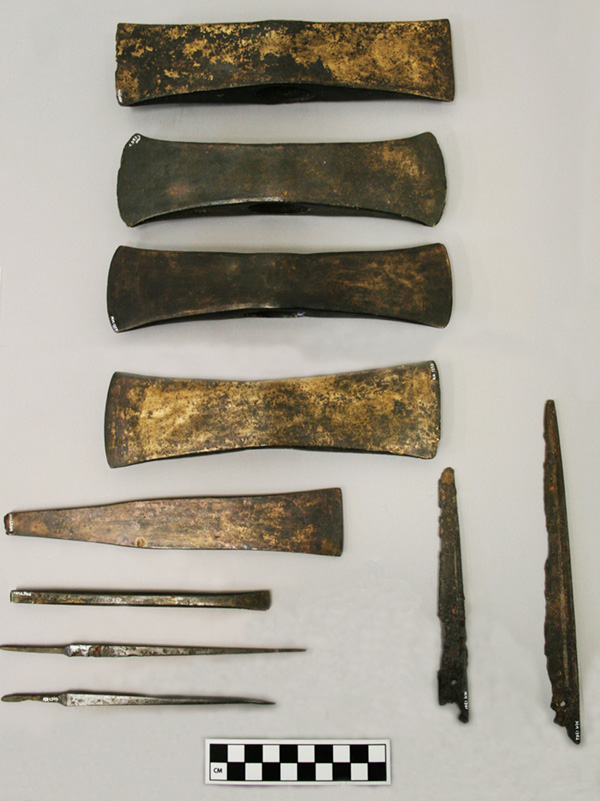October 2018 (122.4)
Article
Contextualizing Mycenaean Hoards: Metal Control on the Greek Mainland at the End of the Bronze Age
This paper considers the Mycenaean metallurgical industry at the end of the Bronze Age through analysis of metal hoards and the tools found within them. An overview of second-millennium hoards from Crete and the Greek mainland is presented to contextualize the various objects from these assemblages. Patterns of implement inclusion reveal a repeated tool grouping in seven Mycenaean hoards, most associated with elite contexts. These Mycenaean caches, incorporating a range of complete and broken items, are traditionally considered recyclable scrap, but they need not be random accumulations. The repetitive tool grouping suggests a structural principle in hoard formations, perhaps dictated by the state. The Mycenaean assemblages from the late 13th or early 12th century B.C.E. highlighted here may represent either palatial stock within a citadel or an archaeological remnant of a metal ta-ra-si-ja allotment given to a smith. The identification of several hoards as metal disbursements from a palace complements the picture of Pylian administration of metal, attested only by the ta-ra-si-ja arrangements outlined in the Jn and Ja Linear B tablets.
